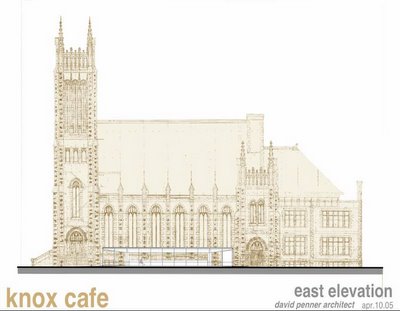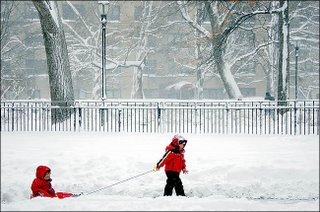
Waiting around at a bus stop for a ride that never comes could be a thing of the past; new technology at bus stops will soon be able to tell you that your bus will never come.
Some of the transit upgrades announced for Winnipeg are nice, and have been planned for awhile. Now that the City announced they would start flowing to Winnipeg Transit again, it will nice to see some of those plans acted upon. One in particular, is an improved radio system, which will hopefully eliminate the regular "platooning" of buses. (For those that go to Portage Avene to catch a bus and see an 11, 21, 22, and 24 travelling together, you know what this is.) Better communication among operaters and dispatchers would not allow this to happen, and a single bus would come on Portage (east of Polo Park) in four-five minute intervals, rather than all Portage routes travelling together every ten-eleven minutes.
Good news for strap-hangers, but unfortunately, it is lessened when you remember that there could still be a net loss of buses operating in the Winnipeg Transit fleet. As transit critic Nick Ternette has pointed out, Winnipeg Transit retires 30 buses per year. Less buses mean longer waiting times.
Many of the other improvements promised to come in the next few years will not do that much to make transit significantly better for its riders. They leave me with a few questions about how effective these improvements will be in the centre of our city (You know, the part of town where the majority of transit riders live, work, go to school, shop, etc.):
1) Where are some locations that the queue-jumping lanes will be able to be built? The example illustrated in the Free Press was at Pembina at University Crescent, which has been there for years... What other intersections can these be built at? Particularly, where in the downtown area, where the built envronment is compact, and property values and significance of many existing buildings makes the cost of building of queue-jumping lanes prohibitive.
2) Are these new "bendy-buses" going to take corners better than conventional buses do and not damage the curbs (ie: at Portage and Vaughan, Main and Euclid, etc.) ?
3) Are they going to be able to stop and go easily without jack-knifing (as they do in Ottawa) in snowy and icey conditions? Will they be able to do so once they are operating on the "real rapid transit corridors" supposedly coming in 10-15 years?
4) Where are the painted diamond lanes going to go within the downtown area, if at all? If they are, how are they going to be effective in the face of normal urban activity: cyclists, on-street parking, vehicles turning on and off the street at intersections, etc? If they are not impeded by these things, how then will the overall feeling of safety and comfort of pedestrians on the sidewalks (by which a city's vibrancy is measured) be affected when more curb lanes are turned into speedways for buses?
5) Will the "bendy-buses" and new improvements be "sexy" enough to lure more people with disposable incomes to use transit instead of drive? Will they be sexy enough to make people want to move downtown or to compact transit-oriented areas of the city? Will stores like The Gap move to Portage Avenue storefronts as a result? Will surface parking lots disapear along the Graham Avenue Transit Mall?
I think that the answers are pretty obvious, and I'm just wondering if $142-M is worth the price of finding out the hard way that the costs will outweigh the benefits.
When it comes to improving the existing bus-based system, the strap-hangers of this city want dependable and frequent service. They don't need technophilic gimmickry and showpieces for Newflyer Industries and their lapdog politicos.





